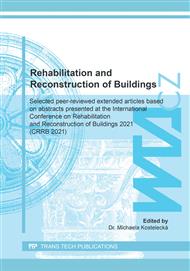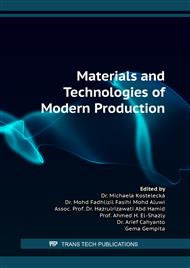p.197
p.205
p.213
p.219
p.225
p.231
p.237
p.245
p.253
Study of the Preparation of Micronized Zinc Phosphate Dihydrate with Potential for Application in the Phosphating Process
Abstract:
The protection of metal parts against corrosion damage is one of the most comprehensive areas of industrial chemistry and a wide range of methods exists to protect the surface from corrosive stimulators, including phosphating. A key phosphating process, the tricationic phosphating, consists of baths containing zinc dihydrogen phosphate and other cations, such as Zn2+, Co2+, Ni2+ or Mg2+. However, cobalt and nickel ions are classified as environmentally harmful and they are being actively excluded from industrial processes. The use of sufficiently micronized zinc phosphate dihydrate (µ-Zn3(PO2)2 · 2H2O) is one the possible approaches to significantly reduce or eliminate heavy metals from the phosphating process. The micronized zinc phosphate dihydrate serves as a nucleus on the metal surface to form a sufficiently high-quality phosphate layer. The study aims to find a procedurally optimal dispersion methodology suitable for application in the Czech Republic. The use of progressive grinding methods such as the jet mills is emphasized and shows promising results.
Info:
Periodical:
Pages:
245-251
Citation:
Online since:
September 2022
Price:
Сopyright:
© 2022 Trans Tech Publications Ltd. All Rights Reserved
Share:
Citation:



